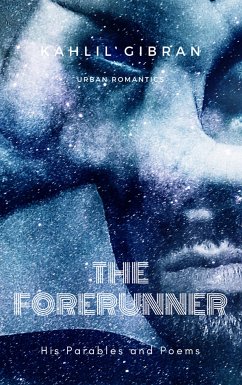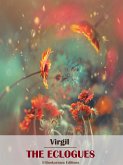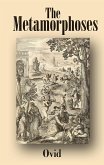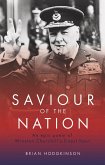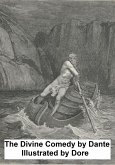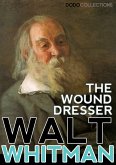2,99 €
inkl. MwSt.
Sofort per Download lieferbar
- Format: ePub
- Merkliste
- Auf die Merkliste
- Bewerten Bewerten
- Teilen
- Produkt teilen
- Produkterinnerung
- Produkterinnerung
- Weitere 8 Ausgaben:
- Broschiertes Buch
- Broschiertes Buch
- Broschiertes Buch
- Broschiertes Buch
- eBook, ePUB
- eBook, ePUB
- eBook, ePUB
- eBook, ePUB

Bitte loggen Sie sich zunächst in Ihr Kundenkonto ein oder registrieren Sie sich bei
bücher.de, um das eBook-Abo tolino select nutzen zu können.
Hier können Sie sich einloggen
Hier können Sie sich einloggen
Sie sind bereits eingeloggt. Klicken Sie auf 2. tolino select Abo, um fortzufahren.

Bitte loggen Sie sich zunächst in Ihr Kundenkonto ein oder registrieren Sie sich bei bücher.de, um das eBook-Abo tolino select nutzen zu können.
- Geräte: eReader
- ohne Kopierschutz
- eBook Hilfe
- Größe: 1.27MB
- Upload möglich
Andere Kunden interessierten sich auch für
![Verbalizations for a Broken Heart (eBook, ePUB) Verbalizations for a Broken Heart (eBook, ePUB)]() The Little FrenchVerbalizations for a Broken Heart (eBook, ePUB)2,99 €
The Little FrenchVerbalizations for a Broken Heart (eBook, ePUB)2,99 €![The Eclogues (eBook, ePUB) The Eclogues (eBook, ePUB)]() VirgilThe Eclogues (eBook, ePUB)0,49 €
VirgilThe Eclogues (eBook, ePUB)0,49 €![Jesus the Son of Man. Illustrated (eBook, ePUB) Jesus the Son of Man. Illustrated (eBook, ePUB)]() Kahlil GibranJesus the Son of Man. Illustrated (eBook, ePUB)0,99 €
Kahlil GibranJesus the Son of Man. Illustrated (eBook, ePUB)0,99 €![The Metamorphoses (eBook, ePUB) The Metamorphoses (eBook, ePUB)]() OvidThe Metamorphoses (eBook, ePUB)1,49 €
OvidThe Metamorphoses (eBook, ePUB)1,49 €![Saviour of the Nation (eBook, ePUB) Saviour of the Nation (eBook, ePUB)]() Brian HodgkinsonSaviour of the Nation (eBook, ePUB)9,95 €
Brian HodgkinsonSaviour of the Nation (eBook, ePUB)9,95 €![The Divine Comedy (eBook, ePUB) The Divine Comedy (eBook, ePUB)]() DanteThe Divine Comedy (eBook, ePUB)1,99 €
DanteThe Divine Comedy (eBook, ePUB)1,99 €![The Wound Dresser (eBook, ePUB) The Wound Dresser (eBook, ePUB)]() Walt WhitmanThe Wound Dresser (eBook, ePUB)1,99 €
Walt WhitmanThe Wound Dresser (eBook, ePUB)1,99 €-
-
-
Produktdetails
- Verlag: Interactive Media
- Erscheinungstermin: 21. Oktober 2021
- Englisch
- ISBN-13: 9781787363168
- Artikelnr.: 62821880
Gibran Khalil Gibran (Arabic: ¿¿¿¿¿ ¿¿¿¿ ¿¿¿¿¿¿, ALA-LC: Jubran Khalil Jubran, January 6, 1883 - April 10, 1931), usually referred to in English as Kahlil Gibran (pronounced /k¿¿'li¿l d¿¿'br¿¿n/ kah-LEEL ji-BRAHN),[3] was a Lebanese-American writer, poet and visual artist, also considered a philosopher although he himself rejected the title.[4] He is best known as the author of The Prophet, which was first published in the United States in 1923 and has since become one of the best-selling books of all time, having been translated into more than 100 languages. Born in a village of the Ottoman-ruled Mount Lebanon Mutasarrifate to a Maronite family, the young Gibran immigrated with his mother and siblings to the United States in 1895. As his mother worked as a seamstress, he was enrolled at a school in Boston, where his creative abilities were quickly noticed by a teacher who presented him to photographer and publisher F. Holland Day. Gibran was sent back to his native land by his family at the age of fifteen to enroll at the Collège de la Sagesse in Beirut. Returning to Boston upon his youngest sister's death in 1902, he lost his older half-brother and his mother the following year, seemingly relying afterwards on his remaining sister's income from her work at a dressmaker's shop for some time. In 1904, Gibran's drawings were displayed for the first time at Day's studio in Boston, and his first book in Arabic was published in 1905 in New York City. With the financial help of a newly met benefactress, Mary Haskell, Gibran studied art in Paris from 1908 to 1910. While there, he came in contact with Syrian political thinkers promoting rebellion in the Ottoman Empire after the Young Turk Revolution; some of Gibran's writings, voicing the same ideas as well as anti-clericalism, would eventually be banned by the Ottoman authorities. In 1911, Gibran settled in New York, where his first book in English, The Madman, would be published by Alfred A. Knopf in 1918 with writing of The Prophet or The Earth Gods also underway. His visual artwork was shown at Montross Gallery in 1914, and at the galleries of M. Knoedler & Co. in 1917. He had also been corresponding remarkably with May Ziadeh since 1912. In 1920, Gibran re-founded the Pen League with fellow Mahjari poets. By the time of his death at the age of 48 from cirrhosis and incipient tuberculosis in one lung, he had achieved literary fame on "both sides of the Atlantic Ocean," and The Prophet had already been translated into German and French. His body was transferred to his birth village of Bsharri (in present-day Lebanon), to which he had bequeathed all future royalties on his books, and where a museum dedicated to his works now stands. As worded by Suheil Bushrui and Joe Jenkins, Gibran's life has been described as one "often caught between Nietzschean rebellion, Blakean pantheism and Sufi mysticism." Gibran discussed different themes in his writings, and explored diverse literary forms. Salma Khadra Jayyusi has called him "the single most important influence on Arabic poetry and literature during the first half of [the twentieth] century,"and he is still celebrated as a literary hero in Lebanon. At the same time, "most of Gibran's paintings expressed his personal vision, incorporating spiritual and mythological symbolism," with art critic Alice Raphael recognizing in the painter a classicist, whose work owed "more to the findings of Da Vinci than it [did] to any modern insurgent." His "prodigious body of work" has been described as "an artistic legacy to people of all nations."
